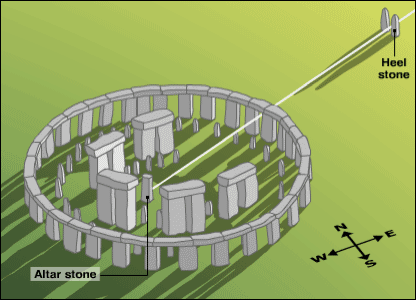The ‘summer solstice’ occurs exactly when the earth’s axial tilt is most inclined towards the sun. The term solstice is derived from Latin words ‘sol’ (sun) and ‘sistere’ (to stand still). During ‘summer solstice’, June 21, the northern hemisphere witnesses its longest of the year while the southern hemisphere sees its shortest day. It is this day when the sun is at its most northerly point and this is why it is ‘the longest day’, means we receive the most hours of daylight. The sun is closer to North Pole as it reaches its northern most latitude and therefore appears at its highest in the sky at noon and also the warmest day of the year.
The solstices have been celebrated by many traditions over the ages. No matter where you live, or what you call it, you can connect to a culture that honored a sun deity around this time of year.
At Britain’s ancient monument Stonehenge, biggest stone circles, the main axis is aligned to the solstice sunrise. A lot of stones are ten or twelve meters high. The earliest part of Stonehenge is nearly 5,000 years old. Every June 21st hundreds of people go to Stonehenge to watch the sun rise. The sun shines on one famous stone-the Heel stone. The Druids were the priests in Britain 2,000 years ago. They used the sun and the stones at Stonehenge to know the start of the months and seasons.
Karka sankranti (‘san’ means to come together and ‘kranthi’ means radical change) is the summer solstice of Sun, which means sun enters cancer or karkataka rashi (zodiac sign) and it marks the beginning of the dakshinayana period in traditional Hindu Solar calendars. Dakshinayana starts on June 21 for calendars followed in north India, for calendars followed in south India dakshinayana begins on July 16, 2011. The term dakshinayana literally means southern journey. It seems to accentuate the idea that we are entering the darker part of the year – less sun, more rain, longer nights. On this day, performing rituals to pay our respect to pithru devathas (departed ancestors) is considered as highly meritorious deed.
Enjoy your summer!
Enjoy your summer!
“Then followed that beautiful season... Summer....
Filled was the air with a dreamy and magical light; and the landscape
Lay as if new created in all the freshness of childhood.”
-Henry Wadsworth Longfellow
Filled was the air with a dreamy and magical light; and the landscape
Lay as if new created in all the freshness of childhood.”
-Henry Wadsworth Longfellow



No comments:
Post a Comment
Thank you for reading my post.